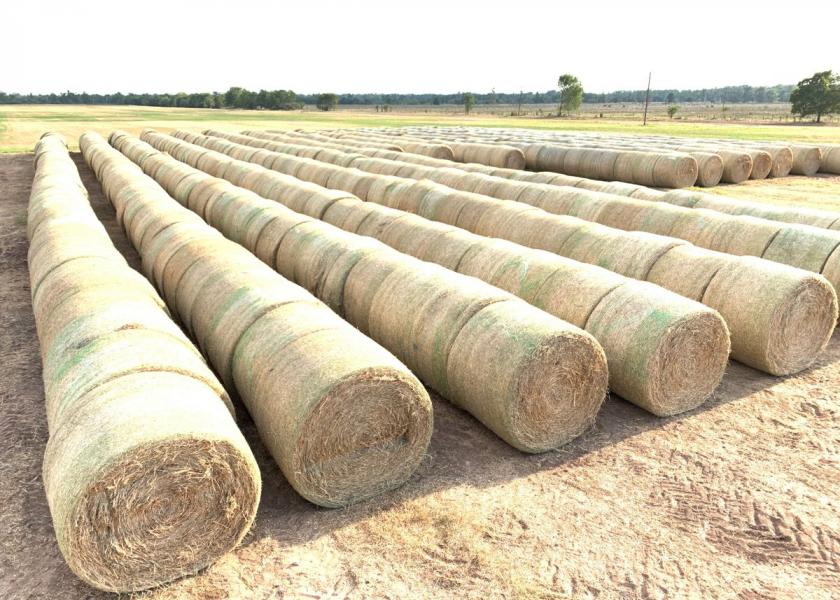Test Don’t Guess!

This year has flown by and we are back to feeding and supplementation season in Oklahoma. By now most producers have begun the process of taking inventory of hay supplies, pricing supplements, and making feed purchases necessary to bridge the gap between the fall grazing season and springtime green-up. Within this process it is also a good idea to submit hay samples to determine their best use within a feeding plan.
Is hay use in your winter-feeding plan? Winter hay feeding is a reality for most producers and some use high quality hays such as alfalfa for supplementation. In both instances, a forage analysis is essential to cost effective and efficient use of the hay. Hay quality varies each year due to the stage of maturity at cutting, soil fertility, growing conditions, harvest circumstances, and storage methods. A real understanding of nutrient value of hay comes only from 1.) accurate sampling procedures and 2.) thorough analysis at the lab. Values obtained from previous years hay analysis or “book values” will work in a pinch but can lead to inaccurate feeding.
So, what makes a good hay sample? Forage samples must closely resemble the entire “lot” of forage. A “lot” of forage consists of forage harvested from one field within a 48-hour period. Each “lot” should be uniform in the forage it represents. For example, the type of plants, amount of weeds, field where it was cut, cutting date, storage conditions, and pest and disease damage should all be consistent in that lot. When these characteristics differ, separate samples should be obtained. Alfalfa producers may have 4 or 5 lots of hay per season from one field. Be sure to sample from each of these lots and keep the analysis separate.
How should the hay be sampled? Baled hay should be sampled after curing with a core sampler or hay probe. When sampling, the hay probe should penetrate at least 12-18 inches into the bale and have an internal diameter of no less than 3/8-in. It is recommended to take no less than 20 samples (1 sample/bale) or cores from a “lot” of hay. Lots greater than 200 tons will require around 40 samples. Large round bales should be sampled by pushing the hay probe straight in at the center of the curved side of the bale. This gives an accurate sample of the entire windrow rather than just a single point within the windrow. Combine the sub-samples within each lot in a bag or bucket, mix well, and then submit a composite sample. Most OSU county extension offices have core samplers that can be loaned out to producers for hay sampling.
What should forage samples be tested for? Hay sources should be analyzed for moisture, protein, and energy as they are all needed to correctly formulate supplemental diets. Producers may also want to test for minerals or for potential issues of nitrate toxicity. Forage samples can be sent to the OSU Soil, Water, and Forage Analytical Lab from your local county extension office. Costs vary depending on the specific test, but most range from $14-20. Speak with your local county extension educator if you have questions about feed and forage testing or would like help interpreting the hay test results.
Accurately testing hay takes time and money. However, accurate results are extremely valuable when formulating cost effective supplements and winter-feeding programs. In a climate of high feed prices and low stocks of hay, it may be a good time for producers to sharpen pencils and evaluate the quality of the forage fed to cattle this winter.
Other resources:
Collecting Forage Samples for Analysis fact sheet http://pods.dasnr.okstate.edu/docushare/dsweb/Get/Document-2553/PSS-2589web2013.pdf
Supplementing Beef Cows fact sheet https://extension.okstate.edu/fact-sheets/supplementing-beef-cows.html
Dr. David Lalman discussed testing hay quality on Sunup on August 14, 2021. Testing Hay Quality 8/14/21 — SUNUP TV (okstate.edu)







